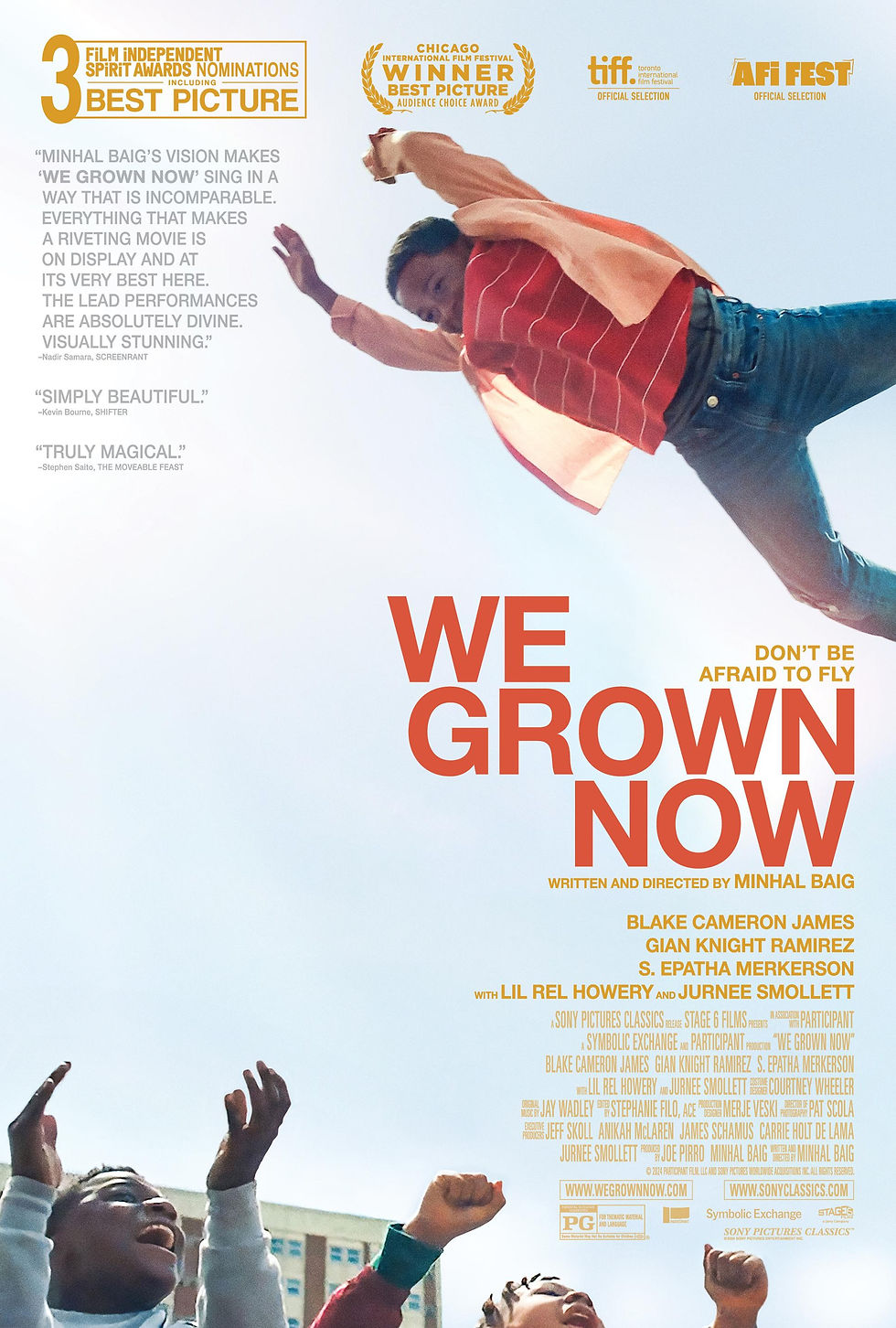
We Grown Now Review
- Louis Saddler
- Apr 27, 2024
- 3 min read
Updated: Apr 29, 2024

Photo Credit - Sony Classics
The Cabrini-Green Homes were always synonymous with Chicago. The infamous housing project’s association with the city was as strong as its ties to deep-dish pizza or Michael Jordan’s exploits at Chicago Stadium and later the United Center. Yet, its reputation dwarfs its presence on the screen. There was never a shortage of talk about its rampant crime and blight, but nothing other than Good Times looking at how the residents lived.
Enter Ramy and Bojack Horseman writer Minhal Baig’s sophomore feature directorial effort, We Grown Now. Set in the early 90s Chicago, We Grown Now follows school-age best friends Malik (Blake Cameron James) and Eric (newcomer Gian Knight Ramirez) as they encounter both the wonders and the strife of a childhood in Cabrini Green.
Like her moving previous feature, the 2019 Apple Original Hala, Baig aptly captures the emotional and psychological balancing act her young characters live with daily. Her prowess as a writer is an absolute gift for those with clear memories of their adolescent years. The authenticity of Malik’s and Eric’s jokes, conversations, etc., instantly conjures memories of one’s early yesteryears. The way Baig writes the banter about jumping contests, the pre-pubescent takes on dating, and the ability to dream high and far is a therapeutic reminder of the innocence of youth.
Conversely, Baig’s script is equally authentic in bringing forth the realities of growing up in Cabrini Green. Those life-and-death conversations that are born of the violence and the city’s handling of the area give a harsh but necessary balance to the film.
Baig also impresses with her visual presentation of the film’s seesaw of beauty and unforgiving conditions. Her shots of the neighborhood’s children at play are stunning, especially the dueling double-dutches. However, the best visuals come from the boys’ dream sequences and art institute visit. The former is reminiscent of the blue hues of Moonlight, and the latter warrants a feature in the halls of its setting. Alternatively, Baig’s gritty shots of the neighborhood’s blight starkly emphasize how quickly said beauty is disrupted and the fortitude one possesses to maintain it.
In front of the camera, We Grown Now boasts a plethora of talent. Still, with all respect to the excellent performances of Jurnee Smollett, S. Epatha Merkerson, and Lil Rel Howery, it’s all eyes on James and Knight Ramirez.
When James and Knight Ramirez are in tandem, they’re a 1-2 punch who exhibit a freeing joy that young black males are rarely afforded the opportunity to show in film. Watching the two performers’ display of charisma, fearlessness, and genuine connection is a time machine to when play ruled our days.
We Grown Now’s heavier parts are where the two young artists really shine, but they pull it off in different ways. Cameron for his part nails expressing the mental gymnastics of a child hit with adult conditions beyond his control. Knight Ramirez hits a real stride here as the more nihilistic of the two. His facial expressions alone at those key points break your heart well before he utters a word. It’s the kind of gut punch that leaves a lingering sadness well beyond the theater.
Despite its title, We Grown Now gives a refreshing view of young black children from the inner city being the children that 99.% of them are instead of younger embodiment stereotypes the media continues to promote to this day. It pays proper homage to the trappings of the inner city that can and has robbed many of their childhood. Yet, it also gives hope with Baig’s and her two young stars’ ability to show there’s still beauty for the people of Cabrini Green to appreciate.



Comments